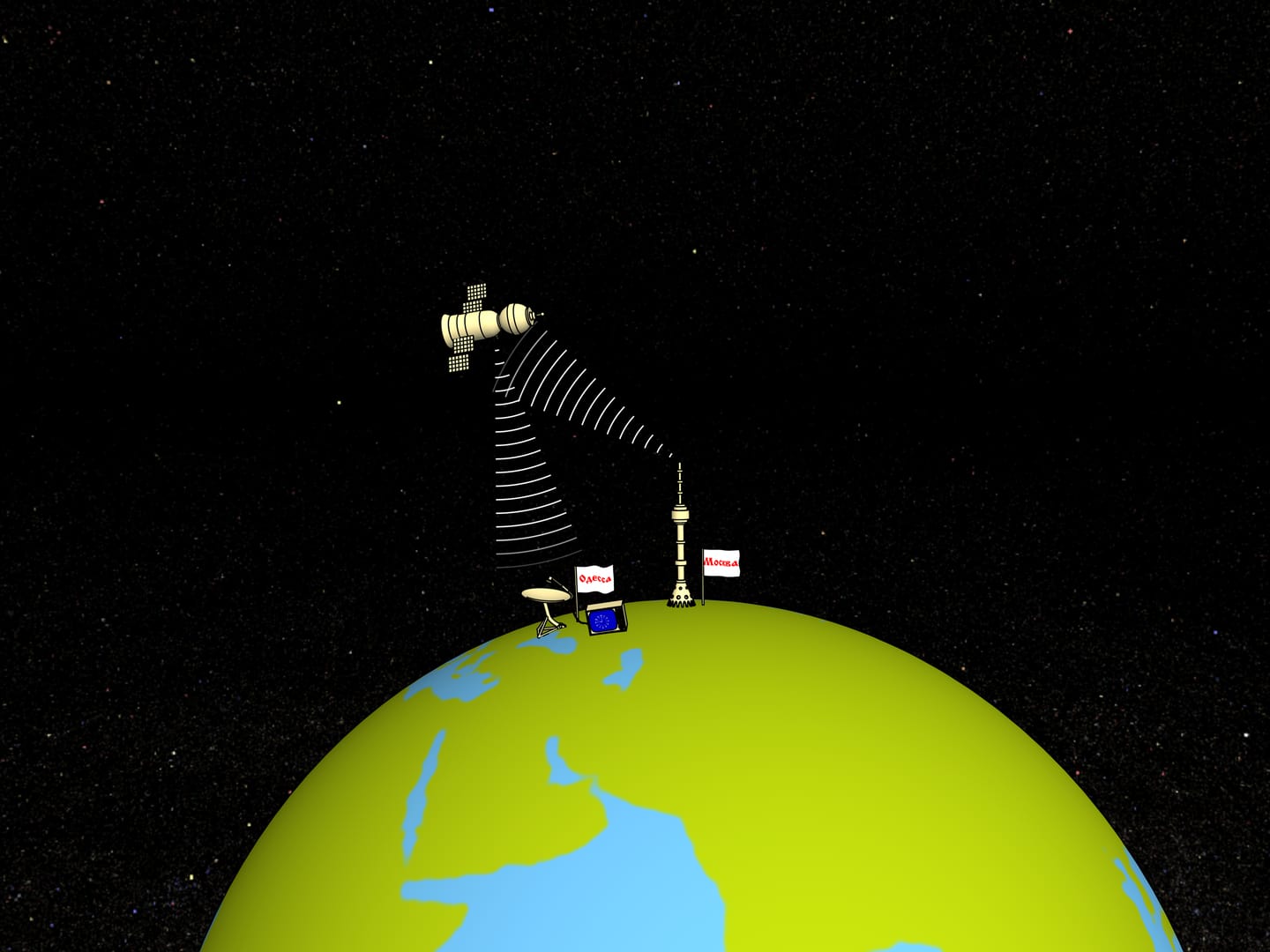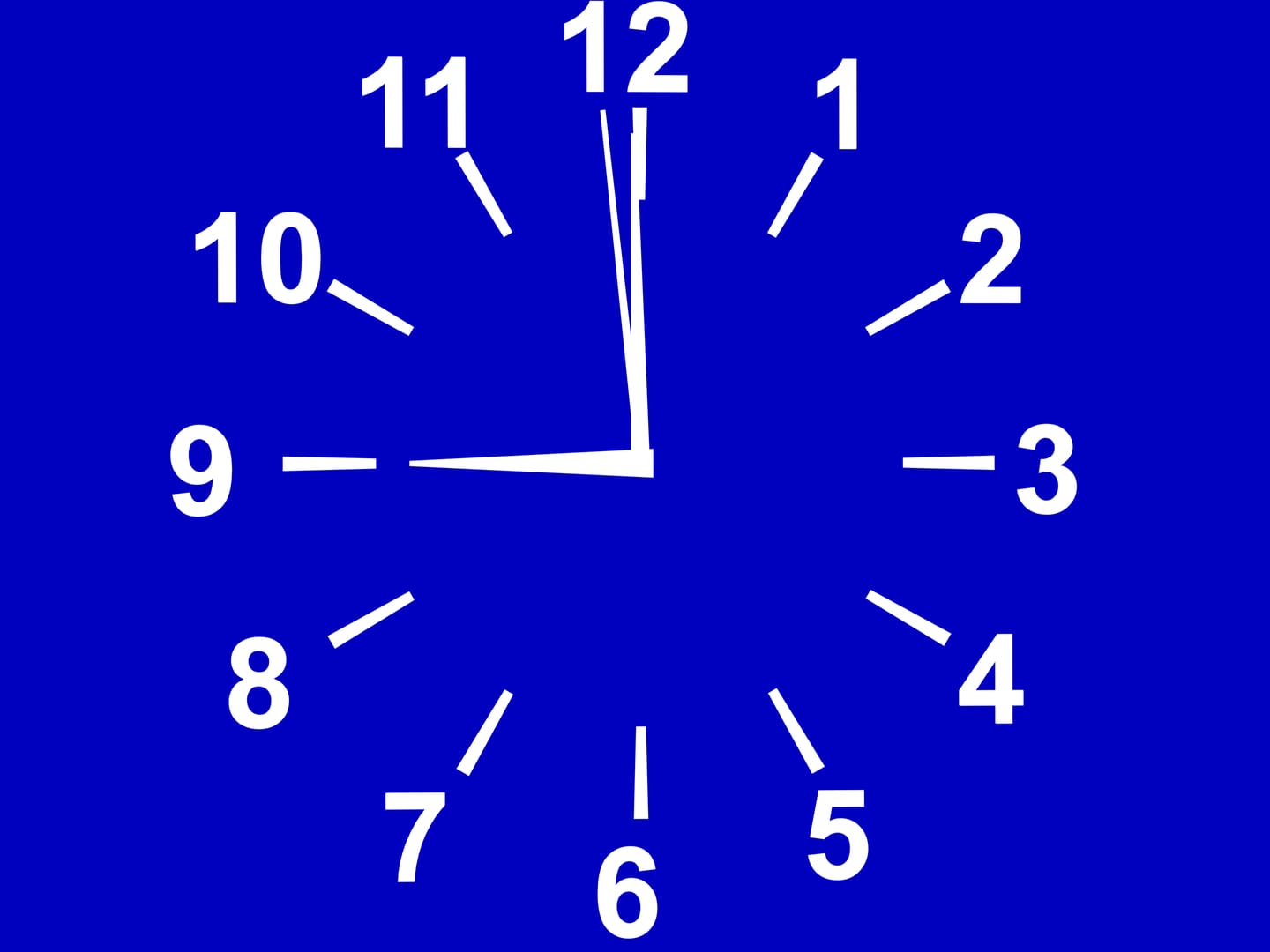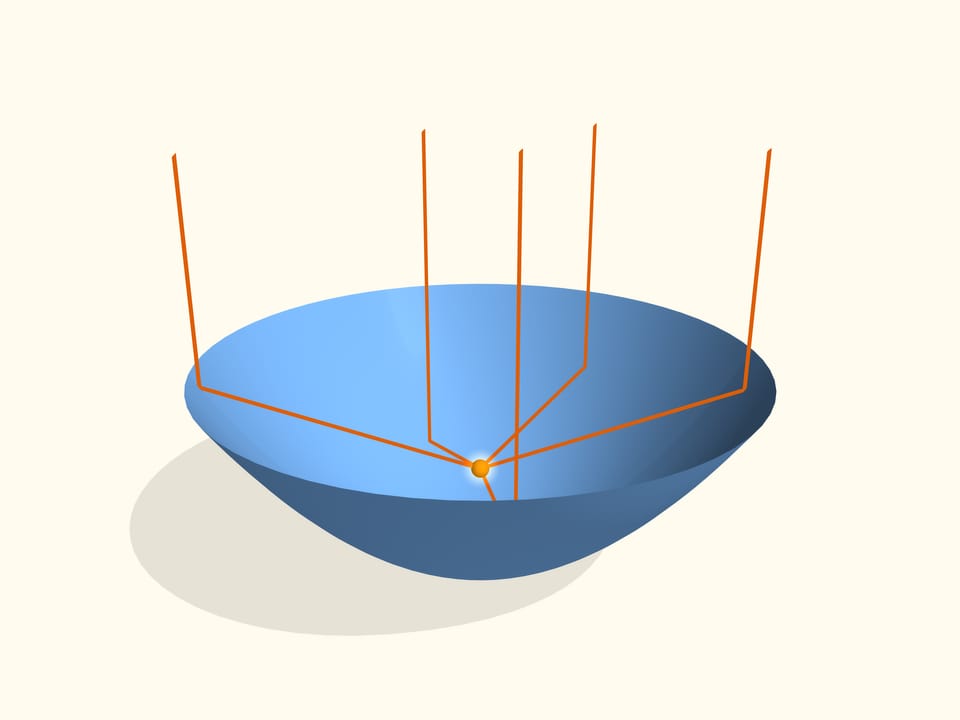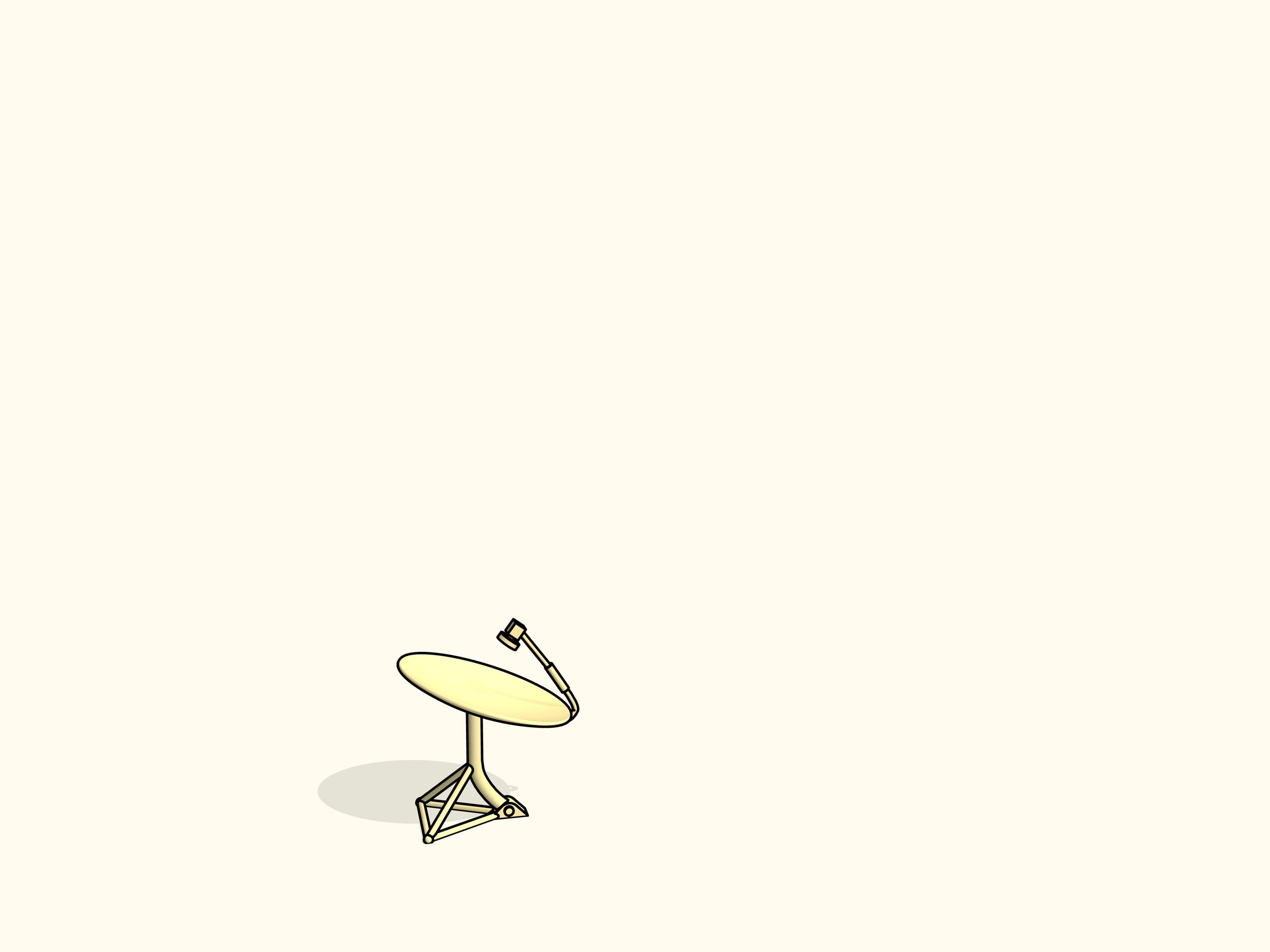A satellite's orbit is called geostationary if as the Earth turns, the satellite stays above the same point of our planet's surface. Such orbits are often used in positioning and communication systems.
he satellite you see on the picture is the symbol of the Russian space program. This is SOUZ-TM.
And this is how the beginning of the main Russian television news program "Vremia" looked like some time ago.
In our movie we'll see how signal transduction works, say, in modern satellite television.
Draw a line and call it a directrix. Take a point that is not contained in it. The locus of points equidistant from the directrix and the given point (called a focus) is called a parabola.
If we direct a beam parallel to the parabola's symmetry axis they'll meet at it's focus. This is what one calls parabola's optical property.
The converse is also true. If we put a lamp in the focus, the rays reflected from the parabola will go in the same direction and the light front will be a straight line.
Rotating a parabola around it's symmetry axis one gets a second-order surface of rotation — a paraboloid. As in any plane section passing trough the symmetry axis we get the same parabola, the optical property is preserved for paraboloids as well. If we place a lamp in the focus, the reflected rays will be parallel. The converse is also true.
Exactly this property is used in satellite parabolic antennas. As satellites are too far from antennas, rays can be considered as parallel and the receiver is placed in the focus of a paraboloid.

















